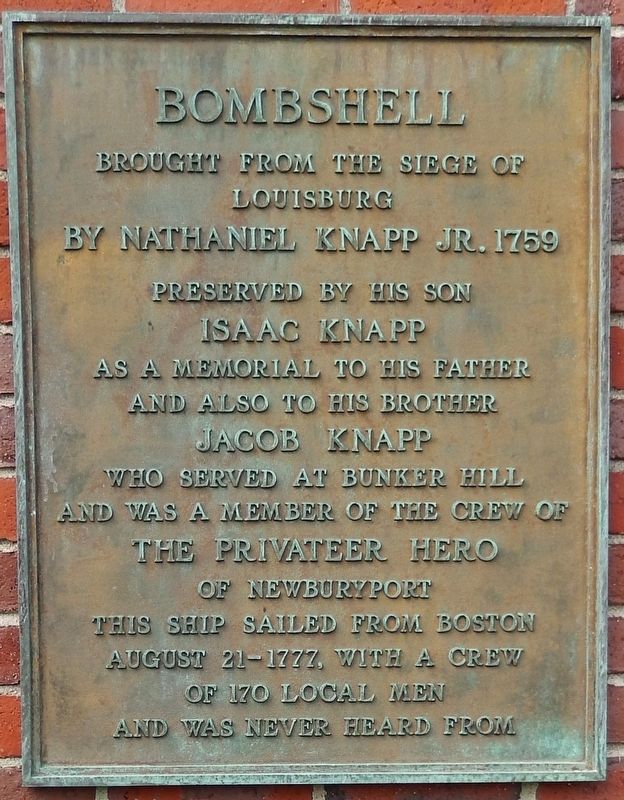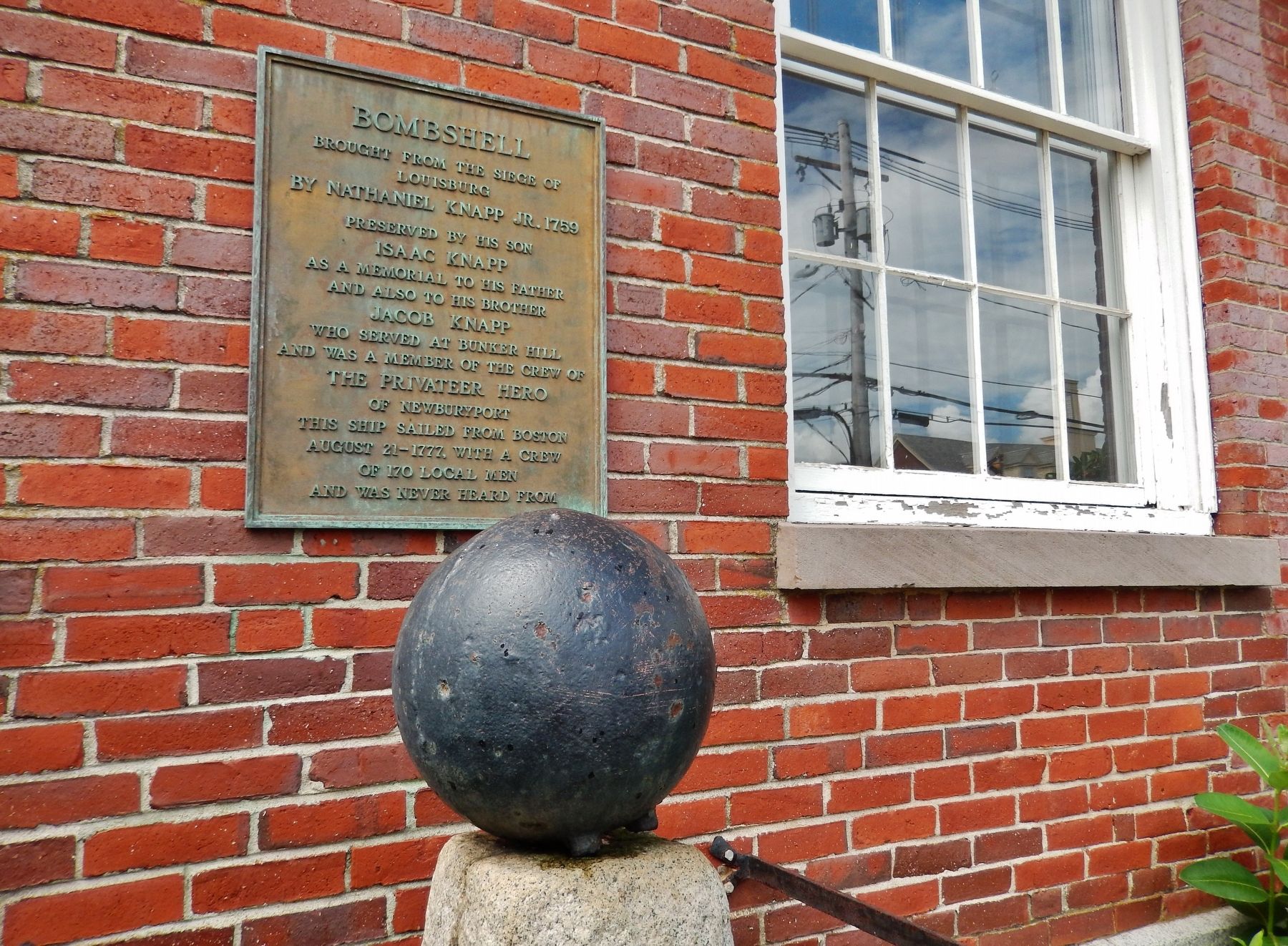Newburyport in Essex County, Massachusetts — The American Northeast (New England)
Bombshell
Brought from the siege of
Louisburg
by Nathaniel Knapp Jr. 1759
preserved by his son
Isaac Knapp
as a memorial to his father
and also to his brother
Jacob Knapp
who served at Bunker Hill
and was a member of the crew of
the Privateer Hero
of Newburyport
This ship sailed from Boston
August 21, 1777, with a crew
of 170 local men
and was never heard from
Topics. This historical marker is listed in these topic lists: War, French and Indian • War, US Revolutionary • Waterways & Vessels.
Location. 42° 48.49′ N, 70° 52.431′ W. Marker is in Newburyport, Massachusetts, in Essex County. Marker is at the intersection of High Street (Massachusetts Route 1A) and Green Street, on the right when traveling south on High Street. Marker is a metal tablet mounted at eye level directly on the front of the Essex County Superior Courthouse building at this location. Touch for map. Marker is at or near this postal address: 145 High Street, Newburyport MA 01950, United States of America. Touch for directions.
Other nearby markers. At least 8 other markers are within walking distance of this marker. The Bartlet Mall (within shouting distance of this marker); Within Lie Buried (about 500 feet away, measured in a direct line); Dalton House (about 700 feet away); William Lloyd Garrison (approx. 0.2 miles away); The Memory of the Officers and Men (approx. 0.2 miles away); Historic 1893 Newburyport Train Station (approx. ¼ mile away); Market Square Tea Burning (approx. 0.3 miles away); Watts' Cellar (approx. 0.3 miles away). Touch for a list and map of all markers in Newburyport.
Regarding Bombshell. The bombshell described by this marker is mounted on a cement pedestal directly in front of the marker.
Also see . . .
1. Siege of Louisbourg (1758).
The Siege of Louisbourg was a pivotal operation of the Seven Years' War (known in the United States as the French and Indian War) in 1758 that ended the French colonial era in Atlantic Canada. The loss of Louisbourg deprived New France of naval protection, opening the Saint Lawrence to attack. Louisburg was used in 1759 as the staging point for General Wolfe's famous Siege of Quebec ending French rule in North America. (Submitted on March 27, 2018, by Cosmos Mariner of Cape Canaveral, Florida.)
2. Louisbourg.
The British victory at Louisbourg really was the first good news London had heard from America in years. The fall of Louisbourg in 1758, along with Britain’s ability to control the Atlantic, effectively severed New France from the mother country. It also opened up Quebec and other inland French cities to British Naval attack as ships could now simply sail up the St. Lawrence River. The fall of Louisbourg marked a major shift in future battles. Without relief from France, New France would slowly suffocate under the pressure of British offensives. It was still too early to know this, but the British victory at Louisbourg would mark the beginning of the end for the French in Canada. (Submitted on March 27, 2018, by Cosmos Mariner of Cape Canaveral, Florida.)
Credits. This page was last revised on September 29, 2020. It was originally submitted on March 27, 2018, by Cosmos Mariner of Cape Canaveral, Florida. This page has been viewed 481 times since then and 21 times this year. Photos: 1, 2, 3. submitted on March 27, 2018, by Cosmos Mariner of Cape Canaveral, Florida. • Andrew Ruppenstein was the editor who published this page.


